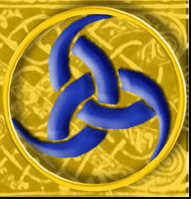
Terms of
Use
Submissions
"Art is anything you can get away with." - Terence Trent D'Arby
"One rhyme does not make a poem." - Anon.
"Whatīs in a poem? That which we call
prose
would read less sweet, for itīs not quite the same." - Not quite
Shakespeare
II. Whatīs in a Poem?
1. Forms
This section introduces you to some common "tools of the trade". Some things may sound very familiar, despite their Latin names ! If you have them present in your mind while constructing your poem, it will go very much faster, easier, and allows you to choose from all options instead of limiting yourself from the start.
1.1 The Foot
example of feet, link to list of feet, footprint image!
The line
Full lines, half-lines..line image
The stanza & The whole poem
Couplet, three, quatrains..
Meters: Epic, Ballad, Sonnet, ON, free verse... give useful examples, link to
Charley, shadowpoetry,
1.2 Rhythm
1.3 Rhyme
1.3.1 Endrhyme
1.3.2 Alliteration, Stave-Rhyme
Internal rhyme
Half and full rhyme
Male and female rhyme
Assonance
Rhyme, as well as alliteration and assonance were a major element of early
heathen poetry. Apart from being pleasing to read and listen to, rhyme has a far
greater importance. It is also a mnemonic device that assists the memory. the
most simple of rhymes or onomatopoeia is used by children as they first learn to
talk. "woof woof" and "quack quack" are used to teach
children the respective sounds of various animals. This most basic of phonic
devices was also used by early peoples and languages, and is the ancestor of
many words in our vocabulary eg. barbarian.
Most of us can still remember the nursery rhymes of our childhood. Rhymes such
as the number of days in a month "thirty days has..." are taught to us
as children and many of us still mumble this to ourselves when in doubt of the
date. That rhyme also has a structural and even substantive function in poetry
is often less realised. It serves to bind together the unit or stanza in which
it is used, to intensify the logical connections and the unity of meaning. It is
the abstraction brought on by the continuos rhythmic chanting of the poem that
produces the mnemonic effect in the mind.
A group or rhyming lines are bound together in a magical way that enhances both
the sense and the musical quality of the verse. A succession of rhymes assists
the progression of thought, differentiating one stanza from another and
providing a technical transition. A strong strong contrast in the rhyming sound
can contribute to the contrast of ideas. Interlocking rhyme, on the other hand,
contributes to an interlocking of ideas.
1.3.1 Endrhyme
1.3.2
Alliteration, Stave-Rhyme
Alliteration is another word for stave-rhyme, and a poetic technique.
When do two words alliterate (stave) with each other ?
Two words alliterate when in both words the syllable that bears the main beat
starts with the same sound (which in most cases means the same letter, but not
always.)
Sdfslfj ecample
Additionally, in a poem, for two words to be said to alliterate they must
usually be within the same line and not too far apart. Two words connected by
alliteration are often intentionally connected in meaning as well.
Btw, the word alliteration comes from Latin and is derived from "ad"=towards and "littera"=letter=stave.
When we talk of rhyme nowadays, we usually mean end-rhyme. However, the broad definition of rhyme includes stave-rhyme/alliteration as well. In European languages stave-rhymed poetry precedes end-rhyme poetry by centuries.
Our everyday language knows also a variety of alliterating expressions: kith and kin, ...........
1.4 Meters
How is alliteration or end rhyme actually employed in
a poem? That depends on the poetic meter.
A poetic meter is like a cooking recipe. It tells you when and how to use your
ingredients. In Old Norse meters, alliteration is the main ingredient. To avoid
boring their listeners with ever the same brand of mind-food, poets have come up
with a whole "cooking book" of various alliterative meters.
Old Norse Meters, or: How to Make an Alliterative Poem
1.4.1 Fornyrdhislag (Old Meter)
The first meter is called fornyrdhislag, or "old word way", usually
translated as Old Meter.
A poem in fornyrdhislag consists of a variable number of stanzas with four
lines.
Each line consists of two half-lines, which have a perceptible hiatus (break) in
their middle.
Each half-line has two beats, hence each line has four beats.
The rules to employ alliteration are the same for all four lines in a stanza,
and hence for the whole poem.
In the first half-line, either the first beat or the second beat or both of
them must alliterate with
the first beat in the second half-line.
The rules do not allow to have the alliteration fall on the second beat of the
second half-line in any combination.
1.4.2 Ljodhahattr (Song Meter)
The second meter, ljodhahattr, translates as Song Meter.
It is a simple variant of Old Meter and very similar to our modern scheme of
ballads or songs.
Again we have a variable number of stanzas. All stanzas follow the same
rules.
Each stanza has four lines.
The first and the third line of each stanza follow exactly the same rules as a
line in fornyrdhislag.
The second and fourth line of each stanza are full lines with three beats (i.e.
not two half-lines with a total of four beats).
In each of these full lines, two or three beats must alliterate.
Allit., rhymes etc. form an internal bond, endrhyme bears a strong emphasis
and outlines the story Use of rhyme: link Jack
Comparisons:Synonyms (Heiti/Kenningar) <-> Metaphor, Simile; Contrast;
Oxymoron Pleonasm Gleichlauf